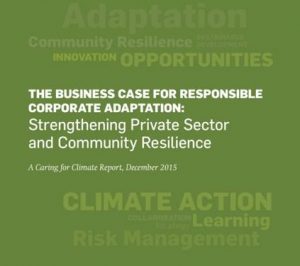Primary Functions
- Taking stock of corporate water behavior
Detailed Description
Companies are increasingly encountering disruption to their operations due to problems of water supply, as well as floods. Multinationals in sectors that use substantial amounts of water may now expect to encounter water supply difficulties in their operations and supply-chains. The availability of water for a range of water users is threatened in many places by a combination of increasing demand and climatic variability – longer periods of dryness and more erratic patterns of rainfall – as well as problems of pollution affecting water quality. The issue has become when and where local and regional water difficulties will arise, and what companies (and other actors) can do about them. As the Action Plan of the UN and World Bank-led High Level Panel on Water notes: ‘Pressure on water is rising, and action is urgent’.
In this context, companies are called upon to improve their management of water including adoption of standards of ‘water stewardship’ for responsible water management respecting shared use of water between water users in catchments and river basins, beyond just individual own use.
The evidence gathered by this study suggests, however, that there has been little evolution, to-date, from business-as-usual. Multinationals are taking time to comprehend the diversity of water-related contexts in which they are operating. Some corporates – a few leaders – are beginning to take steps to change the way they manage water, but they are mostly investing in water infrastructure within their own plants/premises. Recycling, re-use and other technical means of improving the efficiency of water use (reduction of volumes of water used per unit of production) are helpful as far as they go. Yet stewardship, according to international guides/standards, goes beyond efficiency at any individual site to include an understanding of, and response to, water challenges within a catchment, as well as engagement in collective action with other water users and stakeholders within the catchment. Companies need to be aware of, and adaptable to, water issues ‘beyond the factory fence’.





